MATHEMATICS FOR THE
NONMATHEMATICIAN
MATHEMATICS FOR THE
NONMATHEMATICIAN
MORRIS KLINE
Professor of Mathematics, Emeritus
Courant Institute of Mathematical Sciences
New York University

Copyright 1967 by Morris Kline.
All rights reserved
This Dover edition, first published in 1985, is an unabridged republication of the work first published by Addison-Wesley Publishing Company, Inc., Reading, Massachusetts, in 1967 under the title Mathematics for Liberal Arts. The Instructors Manual published with the original edition, containing additional answers and solutions to the problems in the text, has been added to this edition.
Library of Congress Cataloging in Publication Data
Kline, Morris, 1908
Mathematics for the nonmathematician.
Reprint. Originally published: Mathematics for liberal arts. Reading, Mass.: Addison-Wesley, 1967. (Addison-Wesley series in introductory mathematics)
Includes bibliographies and index.
1. Mathematics1961 I. Title.
QA37.2.K6 1985 510 84-25923
ISBN-13: 978-0-486-24823-3
ISBN-10: 0-486-24823-2
Manufactured in the United States by Courier Corporation
24823223
www.doverpublications.com
PREFACE
... I consider that without understanding as much of the abstruser part of geometry, as Archimedes or Apollonius, one may understand enough to be assisted by it in the contemplation of nature; and that one needs not know the profoundest mysteries of it to be able to discern its usefulness.... I have often wished that I had employed about the speculative part of geometry, and the cultivation of the specious [symbolic] algebra I had been taught very young, a good part of that time and industry that I spent about surveying and fortification....
ROBERT BOYLE
I believe as firmly as I have in the past that a mathematics course addressed to liberal arts students must present the scientific and humanistic import of the subject. Whereas mathematics proper makes little appeal and seems even less pointed to most of these students, the subject becomes highly significant to them when it is presented in a cultural context. In fact, the branches of elementary mathematics were created primarily to serve extra-mathematical needs and interests. In the very act of meeting such needs each of these creations has proved to have inestimable importance for mans understanding of the nature of his world and himself.
That so many professors have chosen to teach mathematics as an integral part of Western culture, as evidenced by their reception of my earlier book, Mathematics: A Cultural Approach, has been extremely gratifying. That book will continue to be available. In the present revision and abridgment, which has been designed to meet the needs of particular groups of students, the spirit of the original text has been preserved. The historical approach has been retained because it is intrinsically interesting, provides motivation for the introduction of various topics, and gives coherence to the body of material. Each topic or branch of mathematics dealt with is shown to be a response to human interests, and the cultural import of the technical development is presented. I adhered to the principle that the level of rigor should be suited to the mathematical age of the student rather than to the age of mathematics.
As in the earlier text, several of the topics are treated quite differently from what is now fashionable. These are the real number system, logic, and set theory. I tried to present these topics in a context and with a level of emphasis which I believe to be appropriate for an elementary course in mathematics. In this book, the axiomatic approach to the real numbers is formulated after the various types of numbers and their properties are derived from physical situations and uses. The treatment of logic is confined to the fundamentals of Aristotelian logic. And set theory serves as an illustration of a different kind of algebra.
The changes made in this revision are intended to suit special groups. Some students need more review and drill on elementary concepts and techniques than the earlier book provides. Others, chiefly those preparing for teaching on the elementary level, need to learn more about elementary mathematics than their high school courses covered. Teachers of twelfth-year high school courses and one-semester college courses often found the extensive amount of material in Mathematics: A Cultural Approach rather disconcerting because it offered so much more than could be covered.
To meet the needs of these groups I have made the following changes:
1. Four of the chapters devoted entirely to cultural influences have been dropped. The size of the original book has thereby been reduced considerably.
2. A few applications of mathematics to science have been omitted, primarily to reduce the size of the text.
3. Some of the chapters on technical topics, on arithmetics and their algebras have been expanded.
4. Additional drill exercises have been added within a few chapters, and a set of review exercises providing practice in technique has been added to each of a number of chapters.
5. Improvements in presentation have been made in a number of places.
With respect to use in courses, it is probably true of the present text, as it is of the earlier one, that it contains more material than can be covered in some courses. However, many of the chapters as well as sections in chapters are not essential to the logical continuity. These chapters and sections have been starred  . Thus ).
. Thus ).
As for sections within chapters, can be omitted.
Some of the material, whether or not included in the following recommendations for particular groups, can be left to student reading. In fact, the first two chapters were deliberately fashioned so that they could be read by students. The objective here, in addition to presenting intrinsically important ideas, was to induce students to read a mathematics book, to give them the confidence to do so, and to get them into the habit of doing so. It seems necessary to counter the students impression, resulting no doubt from elementary and high school instruction in mathematics, that whereas history texts are to be read, mathematics texts are essentially reference books for formulas and homework exercises.
For courses emphasizing the number concept and its extension to algebra, it is possible to take advantage of the logical independence of numerous chapters and use .
Courses emphasizing geometry can utilize cannot be presupposed, this chapter must precede the treatment of geometry.
The essence of the two preceding suggestions may be diagrammed thus:

Of course, starred sections in these chapters are optional.
For a one-semester liberal arts course, the basic content can be as follows:
on a historical orientation, |
on logic and mathematics, |
on the number system and elementary algebra, |
through , on Euclidean geometry, |
through , on trigonometry, |
on coordinate geometry, |
Next page
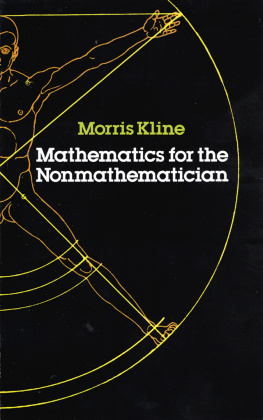

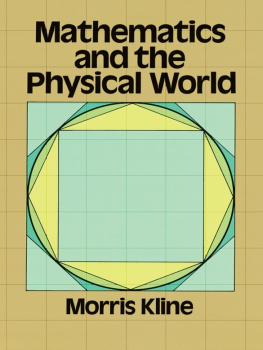
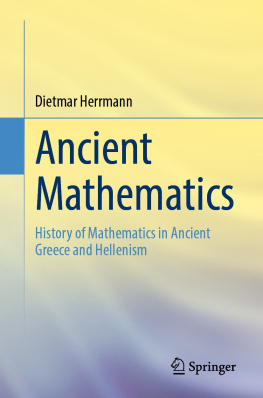

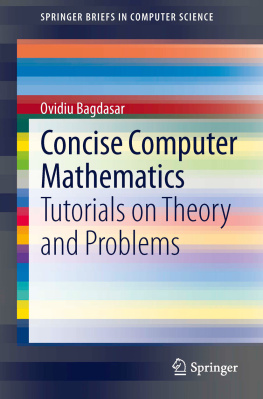
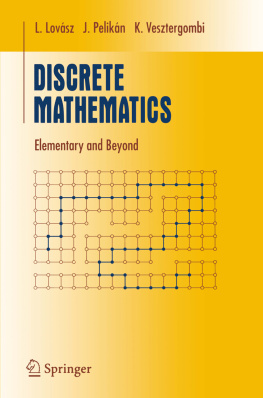

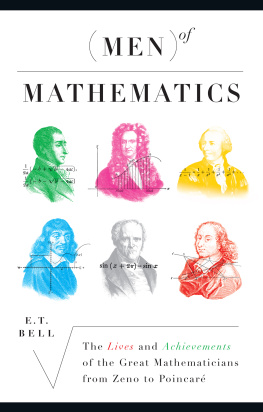
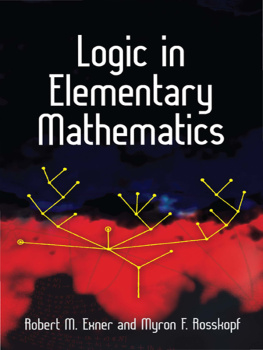
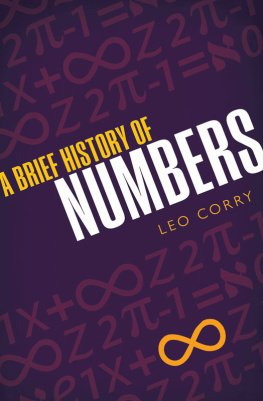
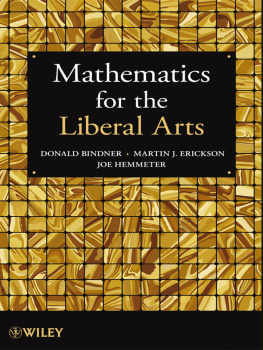
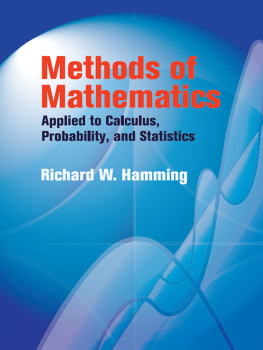

 . Thus ).
. Thus ).